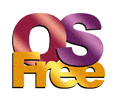This is an old revision of the document!
Table of Contents
Notices
Trademarks and Acknowledgements
- IBM is a registered trademark of International Business Machines Corporation.
- OS/2 is a trademark of International Business Machines Corporation.
- SOM is a trademark of International Business Machines Corporation.
- SOMobject is a trademark of International Business Machines Corporation.
- Windows and Windows NT is a trademark of Microsoft Corporation.
- OMG is a registered trademark of Object Management Group.
- CORBA is a registered trademark of Object Management Group.
- IDL is a registered trademark of Object Management Group.
- Interface Definition Language is a registered trademark of Object Management Group.
- C Language mapping is a trademark of Object Management Group.
All other products or company names mentioned are used for identification purposes only, and may be trademarks of their respective owners.
About This Book
Who Should Use This Book
This book for developers
How This Book is Organized
This book organized in 6 chapters, from quick example of class implementation and usage for local environment as well for distributed environment.
Chapter 1. Quick Start Checklist Chapter 2. Introducing somFree Chapter 3. Building the Classes Chapter 4. Using the Classes in an Application Chapter 5. Running in a Distributed Environment Chapter 6. For More Information




